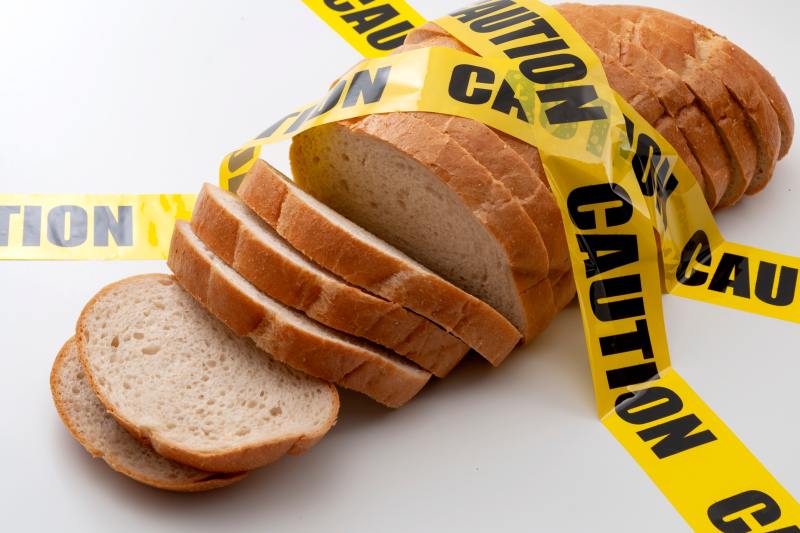When it comes to healthy eating, we often find ourselves comparing different foods. We want to make informed choices about what we put into our bodies. Today, let’s discuss a common question that arises in the realm of nutrition: bread vs potatoes glycemic index. This is an especially important topic for individuals monitoring their blood sugar levels, like those following a ketogenic diet.
Understanding the Glycemic Index (GI)
Before diving into the bread vs potatoes glycemic index debate, it’s crucial to understand what the glycemic index (GI) is. The GI measures how quickly a carbohydrate-containing food raises your blood sugar level. Think of it as a ranking system for carbs–the higher the number, the faster and higher your blood sugar spikes after eating.
Why Does the Glycemic Index Matter?
You might be wondering why we should even care about these numbers. Well, consistently high blood sugar levels, especially if they remain uncontrolled over time, can lead to a cascade of health problems.
Think increased ris k of type 2 diabetes, heart disease, weight gain, and even certain types of cancer.
On the flip side, choosing low-GI foods can be a game-changer for managing weight and blood sugar levels. Low-GI foods are digested more slowly, providing sustained energy, keeping you fuller for longer, and preventing those dreaded sugar crashes.

Bread vs Potatoes Glycemic Index: A Closer Look
Now, let’s dig into the heart of our comparison–bread vs potatoes glycemic index. You might be surprised to learn that the way you prepare these foods can significantly impact their GI scores.
Potatoes and the Glycemic Index
Potatoes often get a bad rap, but are they inherently bad for blood sugar? Here’s a breakdown of how different preparation methods affect their GI: Instant mashed potatoes: This highly processed form of potato tops the chart with a very high GI, thanks to its fine texture and quick absorption. Baked potato: A classic baked potato, while delicious, falls into the medium-to-high GI category. Boiled potato: Boiling potatoes results in a lower GI compared to baking. Sweet potato: Don’t let the name fool you, sweet potatoes actually have a lower GI than regular potatoes. But their sweetness does indicate a higher sugar content, so moderation is key. Raw potato: Surprisingly, raw potatoes have a very low GI. However, eating a raw potato isn’t exactly appetizing.
Bread and the Glycemic Index
Bread, especially the refined white bread many of us are used to, is often demonized for its potential to spike blood sugar levels. But as with potatoes, the type of bread and preparation method matter. Let’s explore the variations in bread and their GI scores: White bread: This refined grain is stripped of its fiber and nutrients, leading to a high GI. Whole-wheat bread: Although a healthier choice than white bread, whole-wheat bread still contains gluten. It’s worth noting that whole-wheat bread can still impact blood sugar levels, so it’s important to consider the overall nutritional value and portion size.
Factors Influencing Glycemic Index Scores
When comparing bread vs potatoes glycemic index, remember that several factors influence their GI scores, and it’s never as simple as good versus bad. The way you cook these foods, the other foods you eat alongside them, and even your individual metabolism all come into play. Keep these factors in mind as you analyze bread vs potatoes glycemic index: Cooking methods: As we’ve seen, the longer a food cooks, the higher its GI tends to be. This is because the heat breaks down starches, making them easier to digest and absorb, leading to more rapid blood sugar spikes. Processing: The more processed a food is, the higher its GI. Refined grains, like white bread and instant mashed potatoes, undergo significant processing that strips away valuable fiber, which normally helps slow down sugar absorption. Fiber content: Foods high in fiber are your best friend when it comes to managing blood sugar. Fiber acts like a buffer in the digestive system, slowing down the absorption of sugars into the bloodstream. Look for breads made with whole grains and aim to consume potatoes with their skin on to increase your fiber intake. Fat and protein content: Combining carbohydrates with protein or fat can help to reduce their overall impact on your blood sugar levels. Consider pairing your potato or bread with healthy fats like avocado or olive oil or protein sources like grilled chicken or fish to balance things out. Individual variation: Every body is unique. Factors like your metabolism, activity levels, gut health, and even genetics can influence how your body responds to different carbohydrates and their effects on blood sugar levels.
Making Informed Choices for Your Health
Navigating the world of nutrition can feel overwhelming, and the information overload surrounding food choices is enough to make anyone’s head spin.
Remember, the key is to focus on balance and moderation rather than getting caught up in restrictive diets or labeling foods as strictly “good” or “bad.”
Enjoy a variety of whole, minimally processed foods and prioritize foods rich in nutrients, like vegetables, healthy fats, and quality protein sources. Being mindful of portion sizes and incorporating regular physical activity will help you further optimize your blood sugar control.

Bread vs. Potatoes
Dive into the comparative impact of these staples on your blood sugar levels. Bread, particularly white bread, often has a high glycemic index (GI), causing rapid spikes in blood sugar. Potatoes, depending on the variety and preparation method, can also rank high on the GI scale. For those seeking a healthier alternative that maintains steady blood sugar levels, keto cornbread is a fantastic choice. Made with low-carb ingredients, keto cornbread not only satisfies cravings but also supports stable energy levels without the glycemic rollercoaster.
Conclusion
In the bread vs potatoes glycemic index match, there’s no clear winner. Both foods can be part of a healthy diet. The key takeaway is this: cooking methods, processing, fiber content, and individual variations all influence how your body responds. By being mindful of these factors and prioritizing whole, minimally processed foods as part of a proper diet, you can enjoy your favorite carbs while effectively managing your blood sugar levels.







